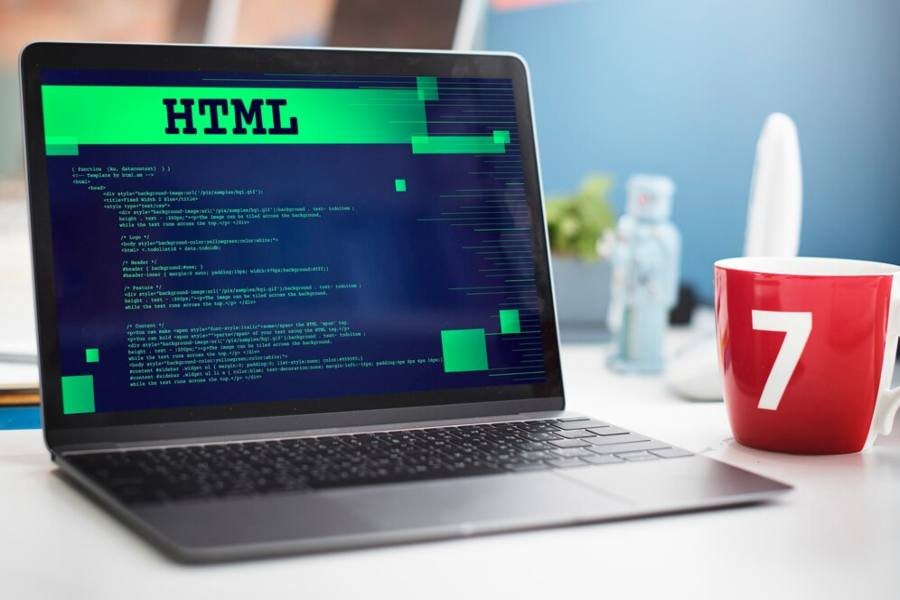How to Make Text Bold in HTML: Simple Tags That Work

When learning HTML, one of the first things developers often ask is, how to make text bold in HTML? Whether you’re designing a blog post, a landing page, or a user interface, bold text plays a critical role in grabbing attention, emphasising key points, and improving readability. But there’s more than one way to apply bold formatting in HTML, and each has its significance in terms of semantics and accessibility.
HTML provides a few standard methods to bolden text—namely, the <b> and <strong> tags. While both visually display bold text, they are used in different contexts. Understanding this distinction can not only improve the structure of your HTML but also boost your SEO and accessibility compliance.
In this article, we’ll walk through everything you need to know about how to make text bold in HTML. We’ll answer the most common questions, explore best practices, compare semantic vs. non-semantic approaches, and even show you how to bold text using inline CSS and custom styles.
Whether you’re a beginner learning HTML basics or a developer aiming to clean up your markup, this guide covers all aspects in a detailed, practical, and easy-to-follow format.
How to make text bold in HTML?
You can make text bold in HTML by using the <b> tag for visual styling or the <strong> tag for emphasis. Both display bold text, but <strong> adds semantic meaning. You can also apply bold using CSS with font-weight: bold in your styles or inline HTML.
Why Is Bold Text Important in HTML Formatting?
Understanding how to make text bold in HTML goes beyond aesthetics—it’s about enhancing user experience and communication. Bold text plays a critical role in improving readability, highlighting key points, and guiding the reader’s eye through important information. This is especially useful in long-form content, where readers tend to skim rather than read line by line.
HTML offers two primary methods for bold text: the <b> tag and the <strong> tag. While both visually bolden the text, their functions differ. The <b> tag is used purely for visual emphasis without any added meaning. In contrast, the <strong> tag signals semantic importance, making it more meaningful for screen readers and search engines.
With HTML5, the focus on semantic elements like <strong> has become more prominent. These tags not only improve the accessibility of your content but also help search engines better understand your page structure and content hierarchy. If you’re converting content from raw, unformatted code or trying to clean up HTML for clarity, a plain text converter can help strip away excess tags while preserving important elements like <strong> for SEO and readability.
In web design, bold text is often used in calls to action, product highlights, and navigation cues. In educational or technical content, it emphasises definitions, steps, or warnings, making the content easier to follow.
When used appropriately, bold text enhances clarity, structure, and engagement, making your HTML content both accessible and user-friendly.
How to Make Text Bold in HTML Using Standard Tags
The <b> Tag: Visual Styling Without Emphasis
The <b> tag in HTML is designed for situations where you want to bold text purely for visual effect without conveying any additional meaning or emphasis. It simply makes the text appear bold on the screen but does not provide semantic context. This makes it useful for styling purposes where the bold text is meant to catch the user’s eye, such as labels, titles, or certain UI elements that require visual contrast. However, because it lacks meaning, it is not recognised by screen readers as having any special importance.
The <strong> Tag: Semantic Meaning and Emphasis
In contrast, the <strong> tag serves both a visual and functional role. Not only does it bold the text, but it also indicates that the content enclosed within the tag is of significant importance. Search engines and screen readers treat this tag with greater weight. It signals that the enclosed text should be emphasized both visually and contextually. This makes <strong> a more effective choice when you want to highlight warnings, instructions, or key messages in your content.
Choosing Between <b> and <strong>
While both tags produce a similar visual effect, their functional roles differ greatly. For simply decorative content, <b> is acceptable. However, for content where meaning matters—especially in headings, callouts, or critical information—<strong> is the better option. It improves both the accessibility and SEO value of your HTML content.
How Browsers Handle These Tags
Modern browsers display both <b> and <strong> tags in bold by default. But under the hood, <strong> carries more significance. Assistive technologies, such as screen readers, acknowledge <strong> as emphasised content, while <b> is treated as basic styling. This makes <strong> the preferred choice in most cases.
Other Ways to Use Bold Text in HTML
In addition to using standard HTML tags like <b> and <strong>, there are several flexible and customizable ways to apply bold styling in HTML. These techniques give developers more control over design, especially when working with CSS or building responsive layouts.
- Inline CSS with the Style Attribute: You can make any text bold directly within an HTML element using the style attribute. For example:
<span style=”font-weight: bold;”>Bold Text</span>.
This method is quick and effective for one-off formatting, though it’s not ideal for larger projects due to repetitive inline styling.
- Using CSS Classes for Reusability: Define a class in your stylesheet like .bold-text { font-weight: bold; } and apply it to multiple elements. This approach is clean, maintainable, and perfect for consistent styling across a website.
- Heading Tags (<h1> to <h6>): HTML heading tags are naturally bold and also contribute to semantic page structure. They are best used for titles, headings, and subheadings, offering both visual emphasis and SEO benefits.
- Custom Styling with <em> and CSS: Although <em> is typically used for italic text, you can override the default with CSS to display it as bold using font-weight: bold;. This is helpful when emphasis needs to be styled differently.
- Font Weight Variants for Design Control: Instead of just using bold, you can define numeric font weights, such as 600, 700, or 800, for varying levels of thickness. This allows for more precise visual styling, especially in modern design systems.
When Should You Use <strong> Instead of <b>?
Learning how to make text bold in HTML involves more than just knowing the tags—it’s about understanding the intent behind them. The <strong> tag should be used when the text carries meaningful emphasis. For example, in scenarios like warnings, instructions, or legal notices, using <strong> communicates importance to both users and search engines. A message such as “Important: Double-check your address” is a perfect use case for <strong> because the emphasis impacts the user’s action.
Conversely, the <b> tag is appropriate for visual emphasis without adding semantic weight. If you want to highlight a label or a keyword for design purposes, and it doesn’t need special interpretation, <b> works just fine. Overusing <strong> can clutter your HTML and dilute its significance.
From an SEO perspective, <strong> can slightly enhance keyword context, but abusing it won’t improve rankings. Likewise, screen readers give added vocal emphasis to content within <strong>, which improves accessibility. Always consider the context and meaning behind bold text, not just its appearance.
Best Practices for Bold Text in HTML for SEO and UX
Applying bold text in HTML is not just about making content stand out—it’s also about enhancing the user experience and improving your page’s SEO value. Below are the best practices to follow when using bold formatting on your website:
- Keep Formatting Natural: Avoid bolding too many words or entire paragraphs. Overuse of bold text can overwhelm readers, diminish emphasis, and make your content look cluttered or unprofessional. Use bolding sparingly and strategically.
- Use <strong> for Meaningful Emphasis: When you want to highlight content that carries significance—like warnings, instructions, or essential tips—use the <strong> tag. It provides both visual boldness and semantic meaning, helping search engines and screen readers interpret the content more accurately.
- Combine CSS and Semantic Tags for Consistency: If you’re aiming for a unified visual style across your website, consider combining semantic tags like <strong> with custom CSS classes. This allows for better design control while maintaining accessibility and meaning.
- Ensure Mobile-Friendly Styling: Your bolded text should render cleanly on all devices, especially mobile. Use responsive design principles to prevent layout issues, such as overlapping or distorted text when bold elements scale across screen sizes.
- Improve Readability and Scannability: Use bold text to guide readers through your content. Emphasize important phrases, headings, callouts, and benefits. This helps users quickly scan and understand key points, improving engagement and retention.
In Closing
Understanding how to make text bold in HTML is essential for both design and accessibility. Whether you use the <b> tag for simple visual emphasis or the <strong> tag for meaningful content, knowing the difference improves your HTML structure, user experience, and SEO. Bold text helps readers quickly grasp key points, especially in long-form content. Developers can also use CSS for more flexibility and consistent styling across web pages. By applying bold formatting strategically—avoiding overuse, focusing on clarity, and ensuring mobile responsiveness—you enhance readability and guide user attention effectively. For accessibility and search optimisation, <strong> remains the best choice when bold text carries actual importance in your content.
FAQ’s
Q. What is the difference between <b> and <strong> in HTML?
A. <b> is used for visual bolding with no meaning, while <strong> provides both visual emphasis and semantic importance.
Q. Can I make text bold using CSS instead of HTML tags?
A. Yes! You can use inline CSS like style’ font-weight: bold;” or define a class in your stylesheet to apply bold formatting.
Q. Is using <strong> better for SEO?
A. Generally, yes. <strong> adds semantic meaning, helping search engines understand what content is important.
Q. Can I set only part of a sentence in bold in HTML?
A. Absolutely. Just wrap the section you want bolded in <b> or <strong> tags, or a <span> with font-weight: bold;.
Q. Do heading tags like <h1> automatically make text bold?
A. Yes, all heading tags (<h1> to <h6>) are bold by default and provide both visual emphasis and structural context.
Q. What’s the safest way to set bold text for accessibility?
A. Use <strong> to convey important meaning. It works well with screen readers and ensures better accessibility compliance.
